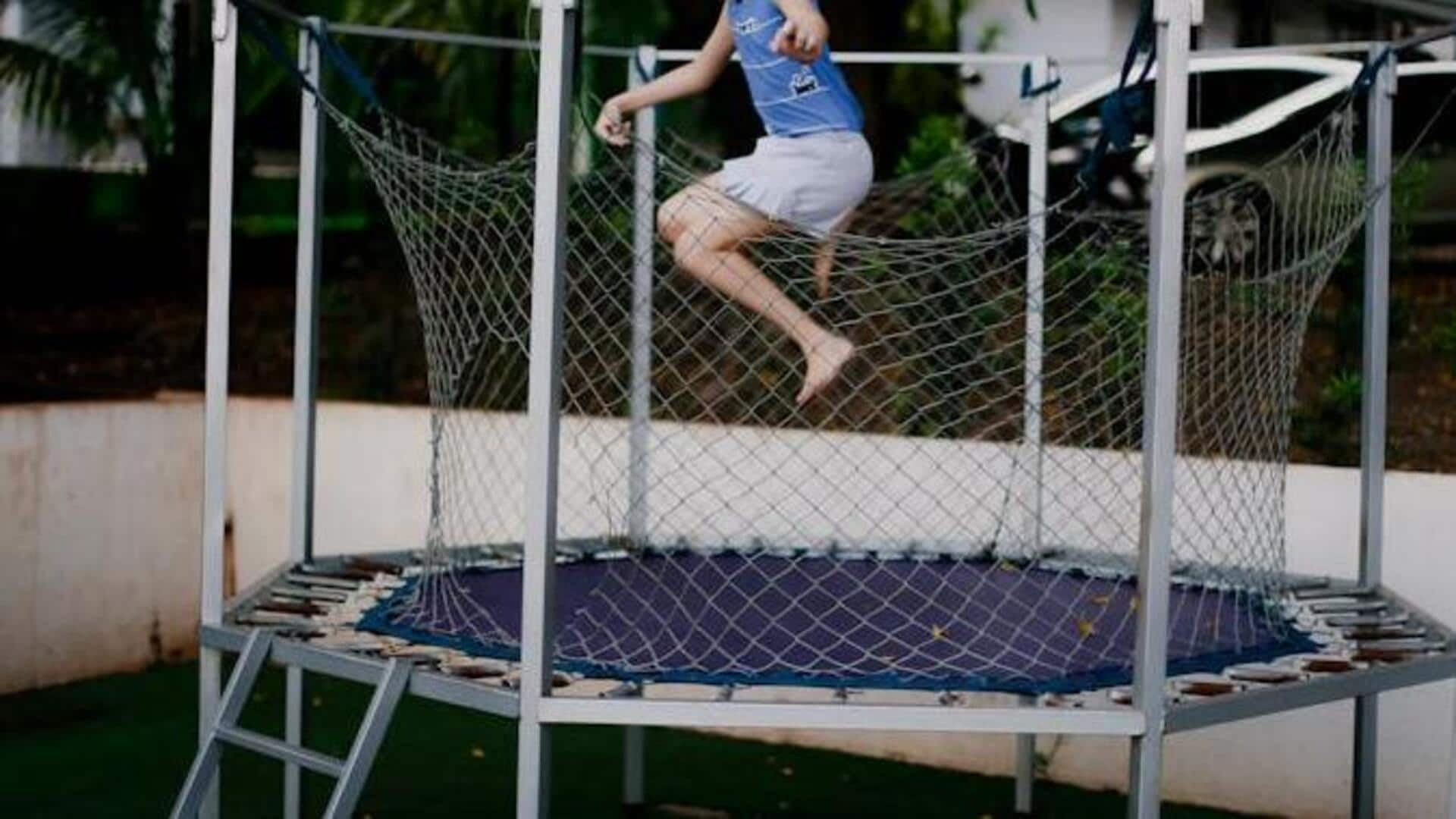
5 surprising benefits of trampolining
What's the story
Trampolining is considered to be a fun activity, but it is more than just that. It can greatly improve your spatial awareness, which is essential for day-to-day activities and coordination. Trampolining can help you learn the position of your body in space, improving the way you move and maintain your balance. Here are five surprising benefits of trampolining that lead to improved spatial awareness.
Drive 1
Enhances balance and coordination
Trampolining requires constant balancing while jumping. This constant requirement for stability greatly improves coordination between your brain and body. As you practice maintaining balance on a constantly changing surface, you develop an improved sense of balance. This isn't just limited to trampolining, but also making how you move through life, more fluid and secure.
Drive 2
Improves proprioception skills
Proprioception is basically the body's ability to perceive its position in space without visual cues. Trampolining improves proprioceptive skills by challenging the body to adapt quickly to changes in movement and direction. This improvement is helpful in gaining better control over movements, reducing the risk of injuries while playing sports or doing physical activities.
Drive 3
Boosts reaction time
The dynamic nature of trampolining demands quick reflexes, and rapid decision-making. As jumpers anticipate their next move, or adjust mid-air, they train their brains to react swiftly. This enhanced reaction time comes in handy not just in sports, but also in day-to-day situations where quick responses are necessary.
Drive 4
Strengthens core muscles
A strong core is important to maintain stability and posture in any physical activity. Trampolining works core muscles thoroughly as they work hard to keep the body balanced while you're jumping. Strengthening these muscles helps a great deal in improved spatial awareness by giving you a stable base for all movements.
Drive 5
Encourages mind-body connection
Trampolining promotes a strong mind-body connection as it requires focusing on both aspects at the same time. As jumpers are aware of their body's movements, they plan their next course of action, enhancing cognitive processing related to spatial orientation. This connection increases overall awareness of one's surroundings and bodily positioning.